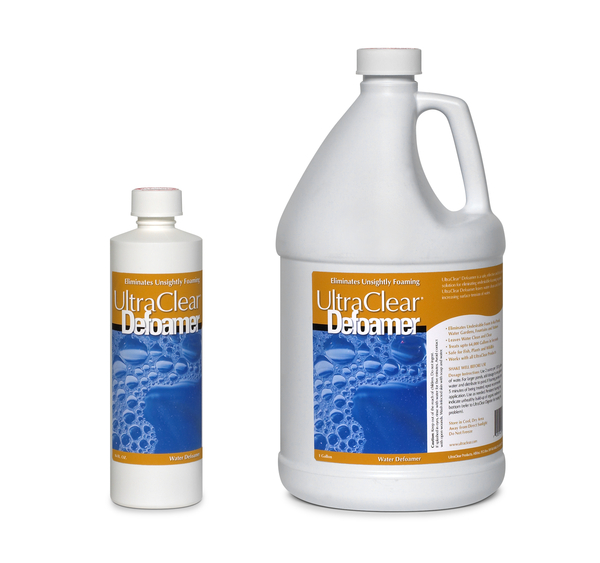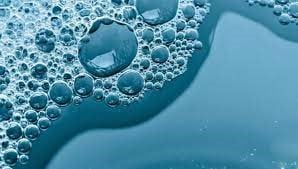A Guide to Understanding the Different Types of Defoamers Available
A Guide to Understanding the Different Types of Defoamers Available
Blog Article
Choosing the Right Defoamer for Your Specific Application Needs
Picking the suitable defoamer for certain application needs is a nuanced procedure that requires mindful consideration of numerous variables, such as the foam medium, operating, and kind problems. Comprehending the nuances of defoamer efficiency-- consisting of rate and persistence-- while additionally accounting for ecological and regulatory elements is essential. In addition, taking part in tests and talking to makers can provide important understandings. Nonetheless, browsing these complexities can be complicated, and the effects of a bad option may be substantial. What strategies can be employed to guarantee an optimal selection?
Understanding Foam Formation
Foam development happens when gas is caught within a liquid, developing a secure framework of bubbles. This phenomenon can considerably influence numerous industrial procedures, especially in markets such as food production, drugs, and wastewater treatment. The existence of foam can hinder blending, reduce item high quality, and even bring about functional ineffectiveness.
Foam usually forms due to a mix of factors, including surface-active agents, frustration, and the qualities of the fluid phase. Surfactants reduced the surface stress of the liquid, helping with the development of bubbles that can coalesce and stabilize. Frustration, whether from mechanical stirring or gas intro, enhances bubble development, causing increased foam volume.
Understanding the mechanics of foam formation is crucial for industries intending to maximize their processes. By recognizing the certain conditions that advertise foam generation, organizations can implement approaches to mitigate its results.
Kinds Of Defoamers Available
Numerous kinds of defoamers are readily available to attend to the challenges presented by foam in industrial applications. defoamers. Broadly identified, defoamers come under 3 categories: silicone-based, non-silicone-based, and natural defoamers
Silicone-based defoamers are renowned for their effectiveness and stability across a large range of temperatures and pH levels. They are typically made use of in applications where strong foam reductions is needed, such as in paints, coverings, and adhesives. Their reduced surface area tension enables rapid foam collapse.
Non-silicone-based defoamers, commonly made from organic substances, supply an alternative for applications conscious silicone residues. These defoamers can be further separated into polyether and ester types, each tailored to fulfill certain formulation needs. Non-silicone defoamers are often made use of in food processing and personal treatment items due to their compatibility with numerous formulas.
All-natural defoamers, stemmed from plant or animal resources, are acquiring grip as a result of their environmentally friendly account. These products are especially appealing in applications where governing conformity and sustainability are critical, such as in agrochemicals and biotechnology.
Selecting the best sort of defoamer is important for maximizing performance and making sure compatibility with details applications.
Key Application Considerations
When choosing a defoamer, it is necessary to take into consideration the certain application needs to ensure optimal efficiency. defoamers. Different sectors have distinctive demands, such as food handling, pharmaceuticals, or wastewater treatment, and each application may require unique defoaming properties
Secret variables to review consist of the tool in which the defoamer will certainly be utilized, whether it is water-based, oil-based, or a combination thereof. The temperature level and pH degrees of the application can likewise considerably affect the performance of a defoamer. In addition, compatibility with other chemicals present in the system is vital to protect against damaging responses that can endanger performance.
Another essential consideration is the foaming actions of the details system. Recognizing whether the foam develops rapidly or slowly can direct the selection of a defoamer that targets the origin cause effectively. The wanted speed of defoaming can affect the option, as some applications require rapid activity while others might tolerate slower defoaming processes.
Lastly, environmental and governing considerations must not be forgotten, especially in sectors with strict compliance needs. Choosing a defoamer that straightens with these variables makes sure both efficiency and safety and security in the application.

Efficiency Testing Approaches
Reviewing the efficiency of a defoamer requires an organized strategy to testing that accurately measures its efficiency in specific applications. Numerous efficiency screening techniques can be employed to establish the optimal defoamer look at here now for an offered solution.
One typical method is the bubble examination, which evaluates the defoamer's ability to reduce foam quantity over time. This test entails producing a secure foam and after that adding the defoamer to observe the rate of foam collapse. An additional method is the vibrant foam test, where foam is produced under regulated conditions to simulate real-world application circumstances. This approach gives understandings right into how the defoamer carries out under varying shear problems.

Ultimately, picking the proper performance testing method depends upon the specific application and the kind of foam being attended to. Each method uses valuable information that can assist solution adjustments and improve the efficiency of the defoamer in practical applications.
Ideal Practices for Option


Next, consider the defoamer's efficiency in terms of speed of action and persistence. A quick-acting defoamer might be needed for processes where fast foam suppression is critical, while a much more relentless formulation may be needed for extended foam control. Furthermore, examine the Resources ecological effect of the defoamer, including its biodegradability and any kind of regulative compliance needs.
Conduct trials with chosen defoamers to establish their performance in real-world problems. By adhering to these best methods, you can enhance foam control performance and ensure the durability of your processes.
Conclusion
In summary, choosing the appropriate defoamer requires a detailed assessment of various elements, including foam kind, tool, operating problems, and ecological factors to consider. Recognizing the distinct characteristics of foam formation and the readily available defoamer choices is critical. In addition, employing reliable performance testing approaches and sticking to best techniques throughout the option process will certainly boost the chance of accomplishing optimal defoaming results. Eventually, an educated selection method will certainly resolve certain application demands and mitigate foaming difficulties effectively.
Picking the ideal defoamer for specific application needs is a nuanced procedure that check this demands careful consideration of multiple aspects, such as the foam medium, operating, and type problems.Selecting the best defoamer is important for attaining optimum efficiency in foam control applications. A quick-acting defoamer might be needed for procedures where quick foam suppression is crucial, while an extra consistent solution may be required for extended foam control.In recap, picking the appropriate defoamer necessitates a detailed examination of different elements, consisting of foam kind, medium, operating problems, and ecological factors to consider. Recognizing the unique qualities of foam formation and the available defoamer alternatives is important.
Report this page